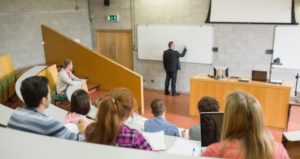“Your students are failing because you are failing them.” These words can cut to the core of any professional educator who strives for excellence in teaching and learning. However, hidden within that criticism is a more useful message: “To help them succeed, you must inspire their imaginations and capture their attention through meaningful and creative engagement within the classroom.”
As English composition instructors, we are tasked with teaching students how to effectively express themselves through writing as well as understand why that’s such an important skill. Oftentimes this is executed by teaching out of a required textbook that addresses the various functions of writing. However, to make the writing assignments more interesting, teachers should consider allowing students to choose topics or, at the very least, assigning ones that hold current relevance.










